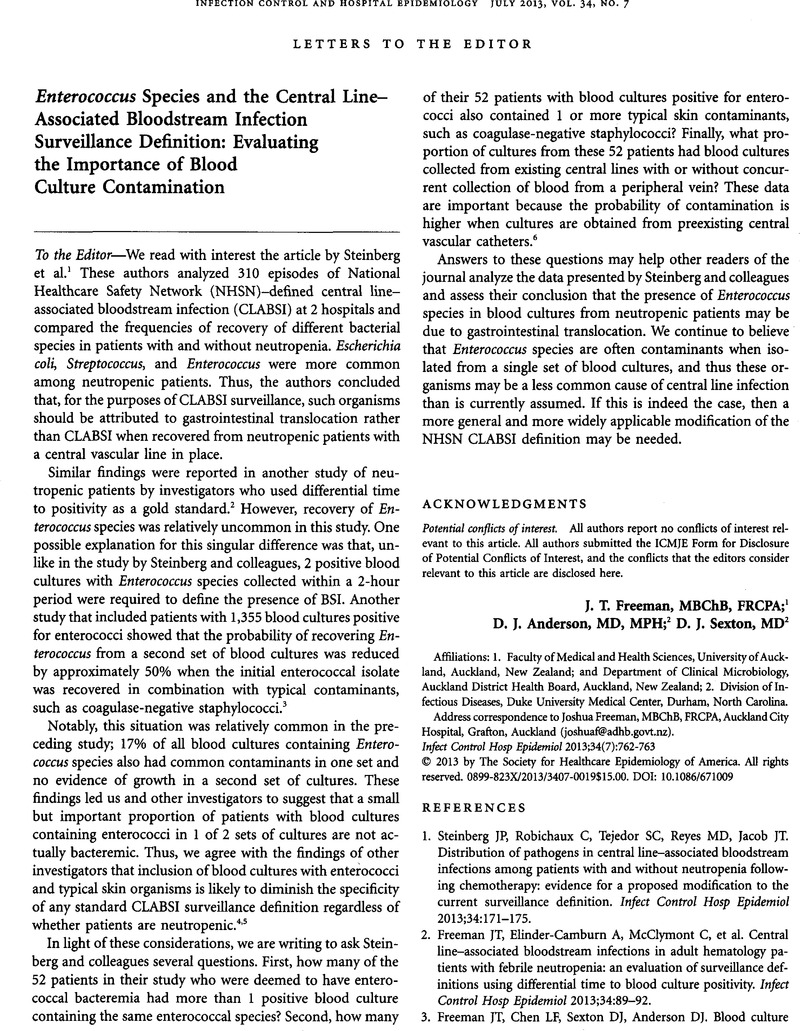Crossref Citations
This article has been cited by the following publications. This list is generated based on data provided by Crossref.
Robichaux, Chad
Jacob, Jesse T.
and
Steinberg, James P.
2013.
Reply to Freeman et al.
Infection Control & Hospital Epidemiology,
Vol. 34,
Issue. 7,
p.
763.



